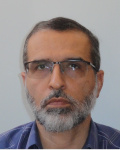| نویسندگان | سیدمحمد هاشمی,سید عبد المهدی هاشمی |
|---|
| نشریه | Proceedings of the Institution of Mechanical Engineers, Part A: Journal of Power and Energy |
|---|
| شماره صفحات | 773 |
|---|
| شماره مجلد | 233 |
|---|
| ضریب تاثیر (IF) | ثبت نشده |
|---|
| نوع مقاله | Full Paper |
|---|
| تاریخ انتشار | 2019-01-09 |
|---|
| رتبه نشریه | علمی - پژوهشی |
|---|
| نوع نشریه | الکترونیکی |
|---|
| کشور محل چاپ | ایران |
|---|
| نمایه نشریه | SCOPUS ,ISC |
|---|
چکیده مقاله
Combustion process of the premixed methane–air in a novel combined porous-free flame burner was investigated numerically. Two-dimensional model considering nonequilibrium thermal condition between the gas and solid phases was used and the combustion was simulated using reduced GRI 3.0 multistep chemical kinetics mechanism. To examine the validity of the implemented numerical model, the burner was manufactured and tested. Good agreement between the numerical results and experimental data were observed. Thermal flame thickness, flame stability limit, and thermal efficiency were discussed. Multimode heat transfer in the porous medium including convection, radiation, and conduction were quantified and perused. Results showed that the thermal thickness of laminar free flame established in the perforated portion of the burner was considerably less than thickness of submerged flame stabilized in the porous medium. Predicted results suggested that the flame stability limit was augmented in the combined burner compared to the burner with full porous foam. Analyses of the heat balance showed that the thermal efficiency of the combined porous-free flame burner was less than thermal efficiency of the full porous burner. Comparison of the full porous burner with the novel combined porous-free flame burner demonstrated that the combined burner caused higher stability limits and lower thermal efficiencies.
